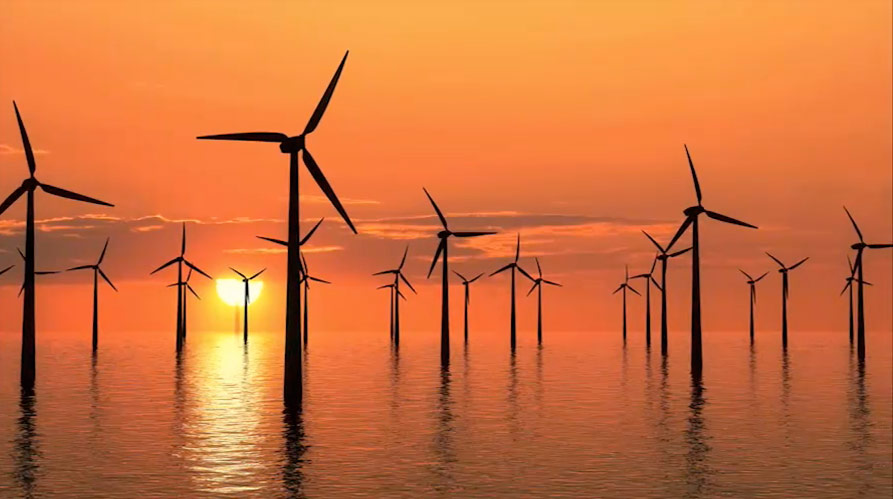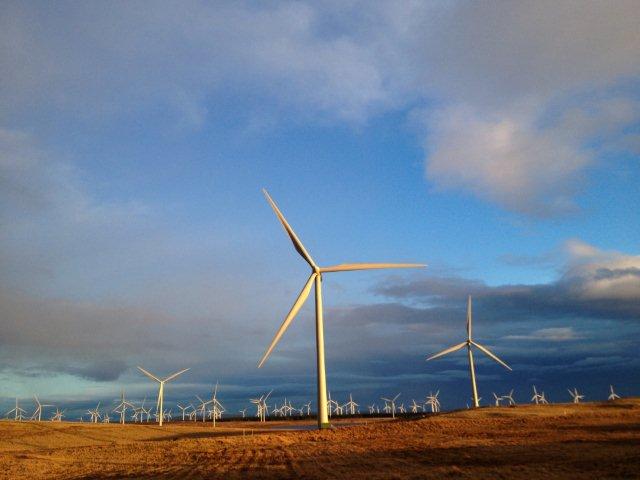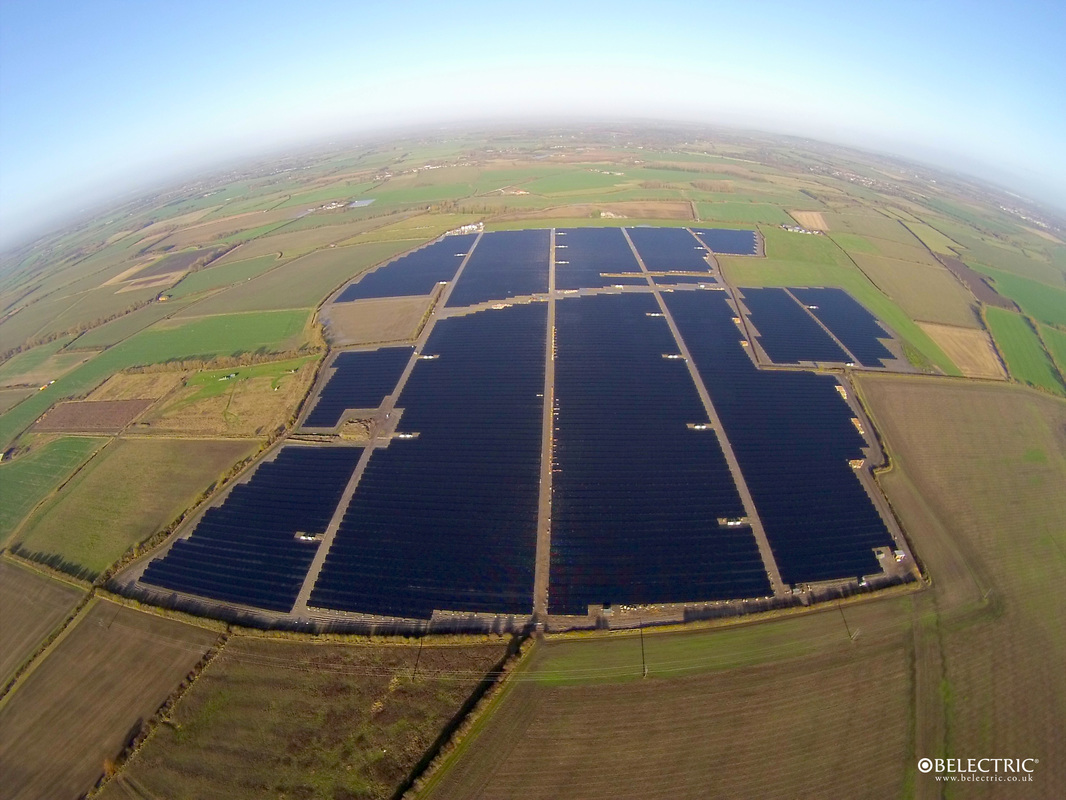Hydro Energy
|
Being one of the oldest renewable energy systems, Hydro power has taken the world by storm. It is well established around the world and currently produces the maximum energy after conventional energy sources like fossil fuels. Nearly 20% of the world electricity (The Renewable Energy Centre, 2016) and around 88% of the world renewable energy supply (Alternative Energy, 2016) in the last decade came from Hydropower. Hydropower can be defined as electricity generated by the energy of moving water. Hydropower works on the principle (Conserve Energy Future, 2016) that kinetic energy from the fast moving water gets converted to mechanical energy when it strikes the turbine and starts moving, which moves the generator thereby creating electricity. In terms of efficiency, hydropower is the only energy system that has the maximum potential (Hi-Energy, 2014), up to 90%.
In the UK, the total installed capacity of hydroelectric power is nearly 1.65 GW (World Energy Council, 2011), which is just 1.8% of UK’s total electricity production but its 18% of UK’s total renewable energy produced. |
Advantages of Hydroelectricity are:
Disadvantages of Hydroelectricity are:
- It’s a sustainable and renewable form of energy.
- There are no greenhouse emissions, thereby being a clean form of energy.
- It is dispatchable, as it can be brought on instantly when the grid demands.
- It has very low power cost. Also, the lifespan is usually more than 100 years so there’s low running cost and less payback period.
Disadvantages of Hydroelectricity are:
- Damage to the ecosystem as there is huge loss of land like forest or grassland, and can affect aquatic ecosystem.
- Hydropower relocates thousands of people living near the planned reservoir, which affects them socially and economically.
- Huge upfront cost, which includes labour and relocation process of people living in the land affected.
- The risk of failure is high due to poor construction, natural disasters or sabotage, which can lead to huge loss of life and infrastructure.
Wind Energy
Wind is a form of solar energy which can be used to generate electricity when harvested by modern wind turbines (Wind Energy Development Programmatic EIS, 2016). Wind energy is a term to describe the process by which the wind is used to generate mechanical power or electricity (Grid Tech , 2016). Wind turbines convert the kinetic energy in the wind into mechanical power. The driving principle of a wind turbine, is when the energy from the wind turns the 3 propeller blades around the rotor, the rotor which is connected to the generator, spins the generator thereby creating electricity (Renewable UK, 2016). The average wind turbines can become operational at a speed of 3-5 meters per second and can attain a maximum power at the speed of 25 meters per second. Although wind turbines are not as efficient as hydro power as they are limited by Betz limit, which is 0.593 (REUK - The Renewable Energy Website, 2006). This shows that the maximum theoretical efficiency a wind turbine can have, although practically that number can be as low as 35%. For increased performance, wind farms generally take advantage of sea breeze and land breeze by being placed near the shores. Sea breeze is the wind that blows from ocean inlands towards the land in daytime and land breeze is the wind the blows from the land towards the ocean during night time.
Advantages of Wind energy are:
Wind is a form of solar energy which can be used to generate electricity when harvested by modern wind turbines (Wind Energy Development Programmatic EIS, 2016). Wind energy is a term to describe the process by which the wind is used to generate mechanical power or electricity (Grid Tech , 2016). Wind turbines convert the kinetic energy in the wind into mechanical power. The driving principle of a wind turbine, is when the energy from the wind turns the 3 propeller blades around the rotor, the rotor which is connected to the generator, spins the generator thereby creating electricity (Renewable UK, 2016). The average wind turbines can become operational at a speed of 3-5 meters per second and can attain a maximum power at the speed of 25 meters per second. Although wind turbines are not as efficient as hydro power as they are limited by Betz limit, which is 0.593 (REUK - The Renewable Energy Website, 2006). This shows that the maximum theoretical efficiency a wind turbine can have, although practically that number can be as low as 35%. For increased performance, wind farms generally take advantage of sea breeze and land breeze by being placed near the shores. Sea breeze is the wind that blows from ocean inlands towards the land in daytime and land breeze is the wind the blows from the land towards the ocean during night time.
Advantages of Wind energy are:
- It’s a sustainable and renewable form of energy.
- It is a clean fuel source, thereby not leading to unwanted greenhouse gas emissions.
- It can be used to supply electricity to remote areas which are not connected to the grid (Ryan, 2009).
- It is cost effective, thereby having a shorter payback period compared to other renewable energy systems. It can also bring about a lot of jobs (US Department of Energy, 2016).
- Compared to convention energy sources like fossil fuels, wind power isn’t as cost effective (Ryan, 2009).
- There is huge losses in transmission, as good wind sites are far away from the city, where more electricity is needed.
- Wind turbines cause noise and aesthetic pollution (Anna Malkan, 2016).
- Wind turbines can damage local wildlife, like birds for onshore wind farms and marine animals for offshore wind farms (National Geographic, 2016).
|
Onshore Wind
Onshore wind farms are currently the most established renewable energy systems after Hydropower and one of UK’s largest source of renewable energy generation. In addition to being a matured, clean and productive technology, onshore wind farms reduce CO2 emissions, provide energy security, and contribute to the local and national economy. Although to take advantage of both the sea breeze and land breeze, onshore wind farms are placed on the lands near the ocean thereby increasing their performance. In the UK, the first commercial wind farm was built in 1991 in Delabole, Cornwall (Reneable UK, 2016). UK has an excellent wind resource, which is why onshore wind works efficiently here. Also, it is one of the most cost effective forms of renewable energy, with an installed capacity of approximately 8635 MW from nearly 5304 turbines (Renewable UK, 2016). Currently, the total onshore generating capacity in UK provides more than 17 TWh of electricity annually and according to certain projections, a total of 12-14 GW of onshore wind farms will be installed by 2020, thereby making onshore wind a supplier of more than 10% of the total energy in the UK. |
Offshore Wind Offshore wind farms are the next most promising renewable systems and are expected to grow faster than onshore wind farms in the UK. Although this technology is not as matured as onshore (Ed, 2013), but it produces clean energy, reduces CO2 emissions and is highly efficient. Offshore wind power’s in contribution to electricity is higher than onshore due to the fact that higher wind speeds are available offshore as compared to land. Currently the offshore wind farms in the UK has an installed capacity of approximately 5100 MW from nearly 1500 turbines and counting (Renewable UK, 2016). Also, the total offshore generating capacity is more than 15 TWh of electricity annually. According to industrial projections, a total of 10 GW of onshore wind farms will be installed by 2020, thereby making onshore wind a supplier of more than 8% of the total energy in the UK. |
Solar (PV) Energy |
Solar energy is the most abundant source of renewable energy in the planet. It is clean and sustainable with absolutely zero greenhouse emissions. There are three systems to utilise solar energy. One of them is concentrating solar power plant, where solar energy is concentrated at a point using mirrors and the other one is solar thermal concentrator, where molten salt solution is used as storage. But the most common one is a Photovoltaic cell (PV). PV is a type of material that can convert solar energy into electricity. Here, the photons from the sunlight hits the semiconductor photovoltaic and frees the electrons thereby giving rise to electricity. The current formed in PV is direct current (DC), so it is converted into alternating current (AC) using an inverter. The maximum efficiency for a commercially available PV is less than 20%. Solar power in the UK has increased rapidly in the last 5 years after the reduction in cost of photovoltaics and the introduction of government policies like feed-in-tariff. As a result the installed capacity of solar power is more than 9.2 GW in the UK (World Energy Council, 2016). |
Advantages of Solar energy are:
- It’s a sustainable and indefinite source of renewable energy, which is a clean source and doesn’t emit greenhouse gases (Damaschke, 2016).
- The electricity bills can be significantly reduced for the consumers.
- The maintenance cost of solar energy system is very low, such that most reliable solar panels have a warranty of 20-15 years (Green Match, 2014).
- The technological development in solar power industry is constantly advancing (Green Match, 2014).
- The capital cost of PV’s are very high currently
- It is not as reliable as hydro or convention energy sources due to high dependency on weather (Damaschke, 2016).
- The efficiency of solar panel is less than 20%, which is very less (Green Match, 2014).
- A lot of space is required to setup solar panels so as to produce sufficient electricity as compared to other renewable energy systems, where more energy is generated in less space.
|
Tidal Energy
|
Tidal Energy is a form of marine energy resource that converts the energy from the tides into electricity. Marine currents, being a continuous source of kinetic energy, is caused by regular tidal cycles (Marine Current Turbines Ltd (MCT), 2016). It is one of the only form of predictable renewable energy after Hydropower. The one considered in this project is Tidal Barrage which is also the oldest method of tidal power generation. Also, the energy efficiency of tidal energy is more than 80% (New World Encyclopedia, 2015), making it the second highest efficient form of energy after Hydropower. Tidal Barrages utilises the potential energy from the difference in height between high and low tides, as the water is first allowed to flow into the bay during the high tide and then released back during low tide via the sluice gates. The energy is captured from the turbines placed at the sluice gates as the water moves in and out (Robert Currie, 2002).
In the UK, there is a huge potential for tidal energy, and if exploitable, tidal power plants can generate up to 20% of the total electricity demand of the UK. The Severn, Dee, Solway and Humber estuaries are all potential sites for tidal energy generating barrages in the UK (Tidal Energy EU, 2016). |
Advantages of Tidal energy are:
- It is a sustainable source of energy and doesn't have any greenhouse emission.
- It is one of the only form of renewable energy that is predictable, so it’s easy to manage positive spikes in energy.
- The lifespan of these energy system is long, making it cost-effective in the long run (Maehlum, 2013).
- They require a huge upfront cost for setup.
- They are only effective for 10 hours a day, when the tide is flowing in and out.
- They cause a significant environmental and ecological damage to the aquatic ecosystem (Oilprice.com, 2009).
References
Damaschke, N., 2016. Solar Energy.
Grid Tech , 2016. 13 Onshore and Offshore wind energy generation technologies.
Hi-Energy, 2014. Hydro Energy.
Maehlum, M. A., 2013. Tidal Energy Pros and Cons.
Marine Current Turbines Ltd (MCT), 2016. Tidal Energy.
National Geographic, 2016. Wind power profile.
New World Encyclopedia, 2015. Tidal Power and Energy Efficiency.
Renewable UK, 2016. Wind Energy.
Renewable UK, 2016. The Voice of Wind and Marine Energy. Offshore wind Energy.
The Renewable Energy Centre, 2016. Hydroelectric Power.
EU, 2016.Tidal Energy in the UK.
US Department of Energy, 2016. Advantages and Challenges of Wind Energy.
World Energy Council, 2016. Hydropower, Solar and Marine.




